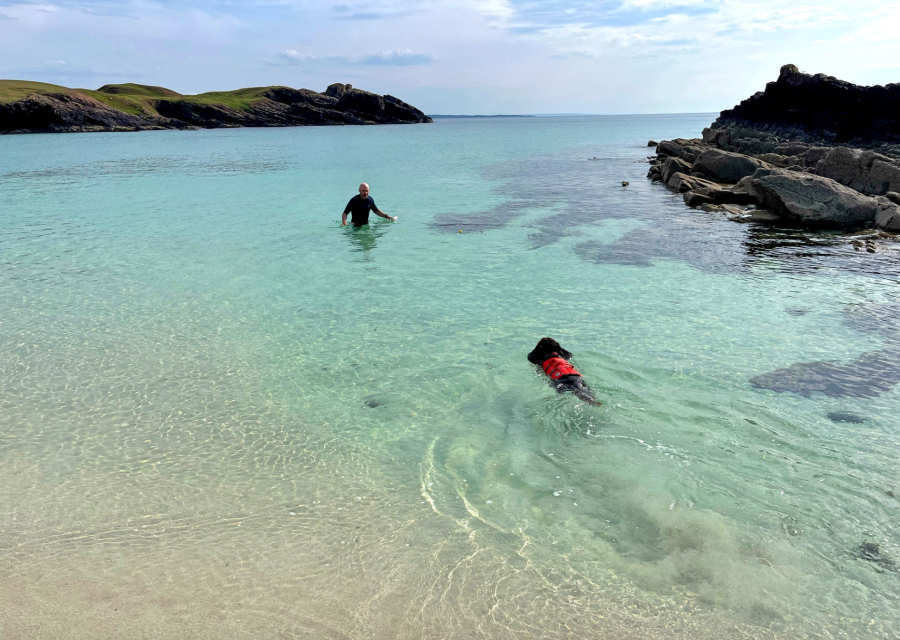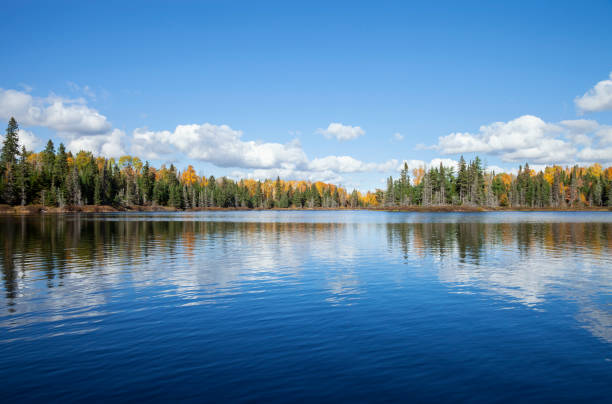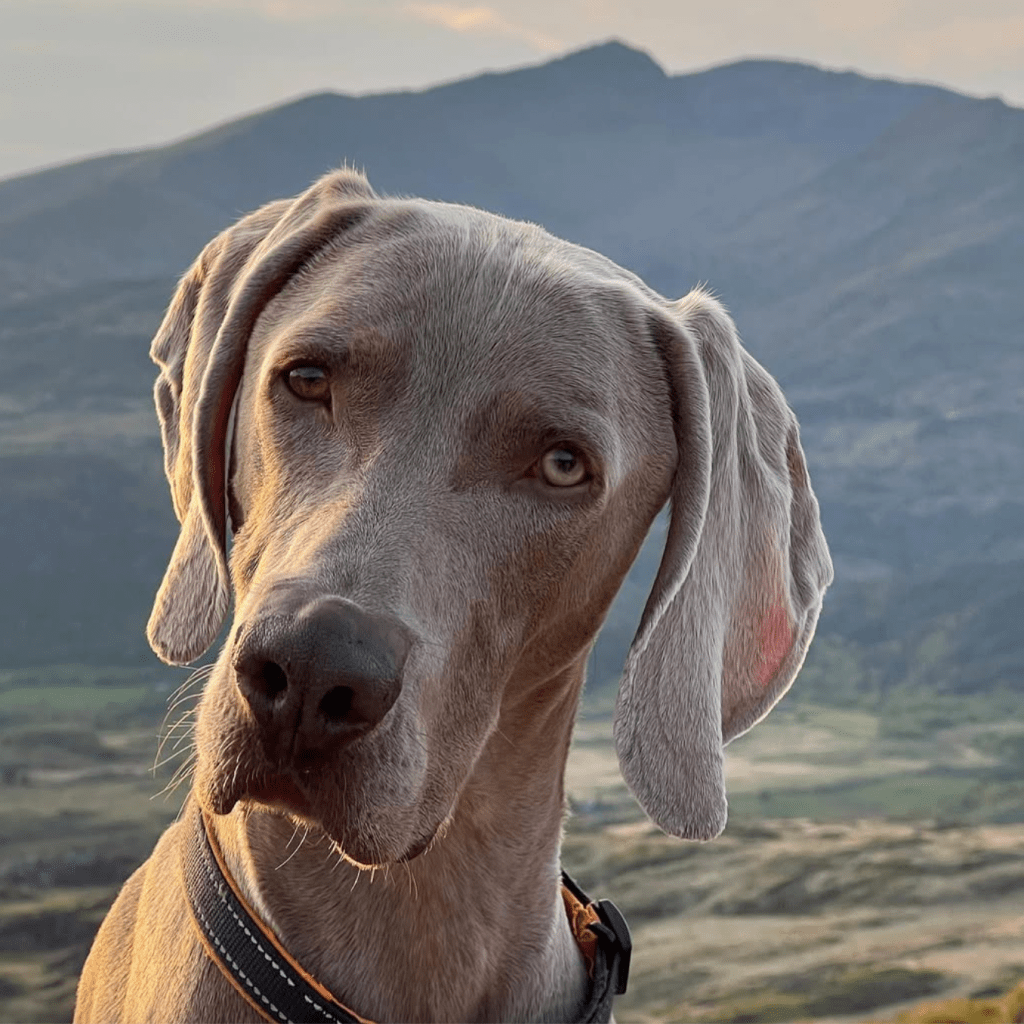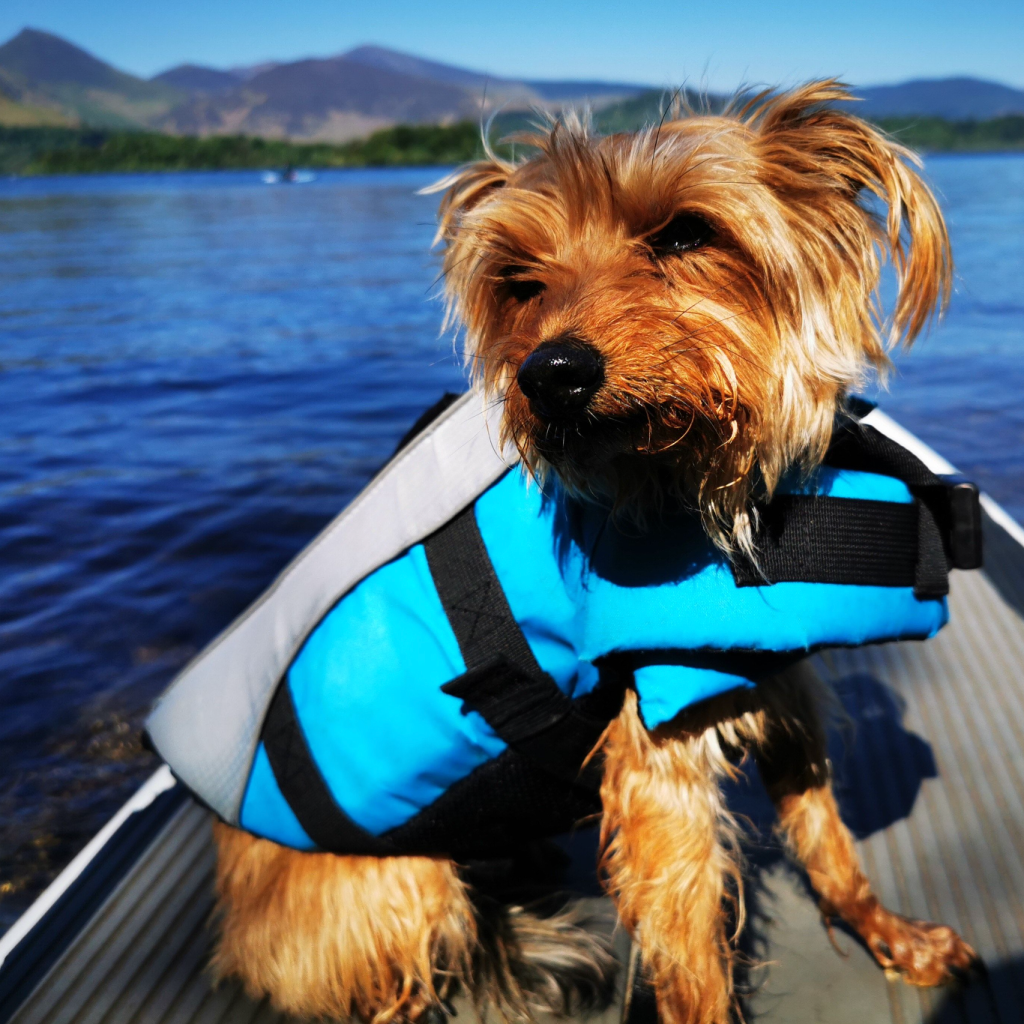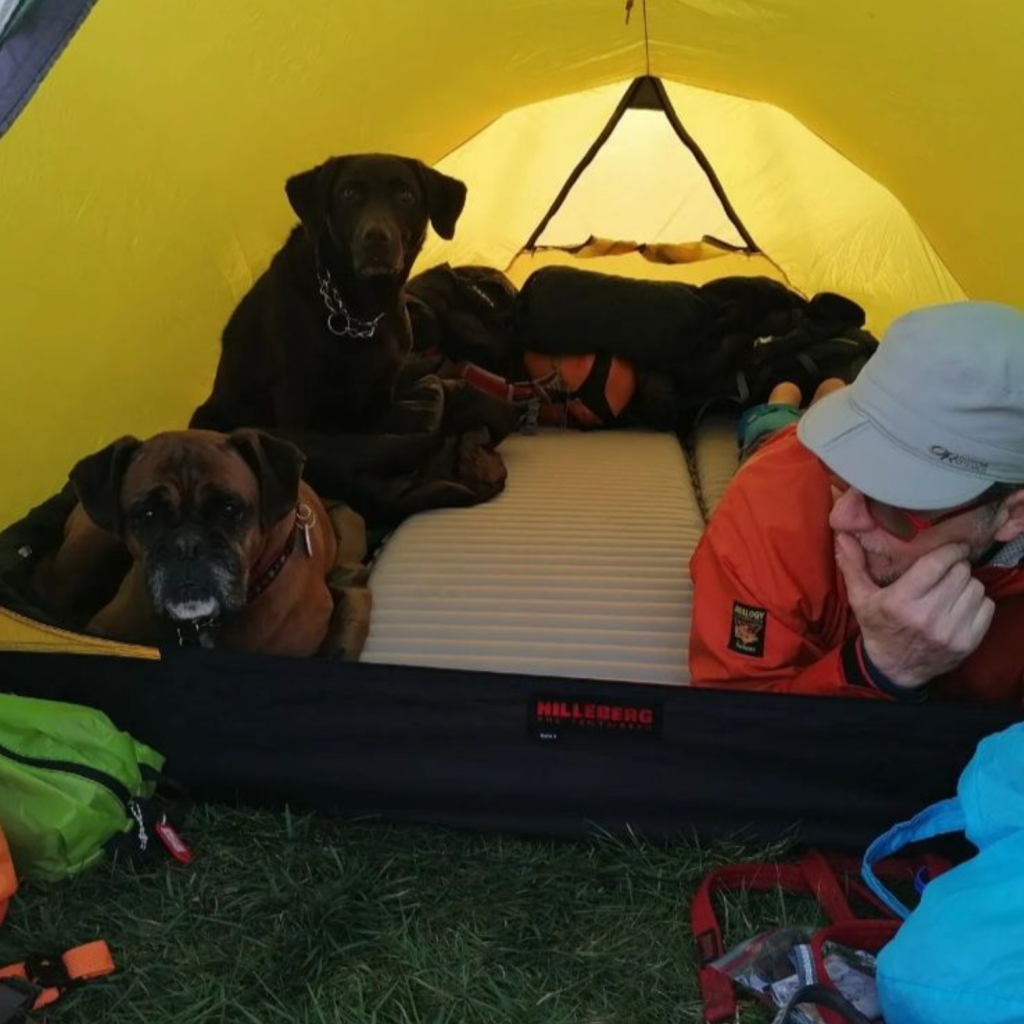


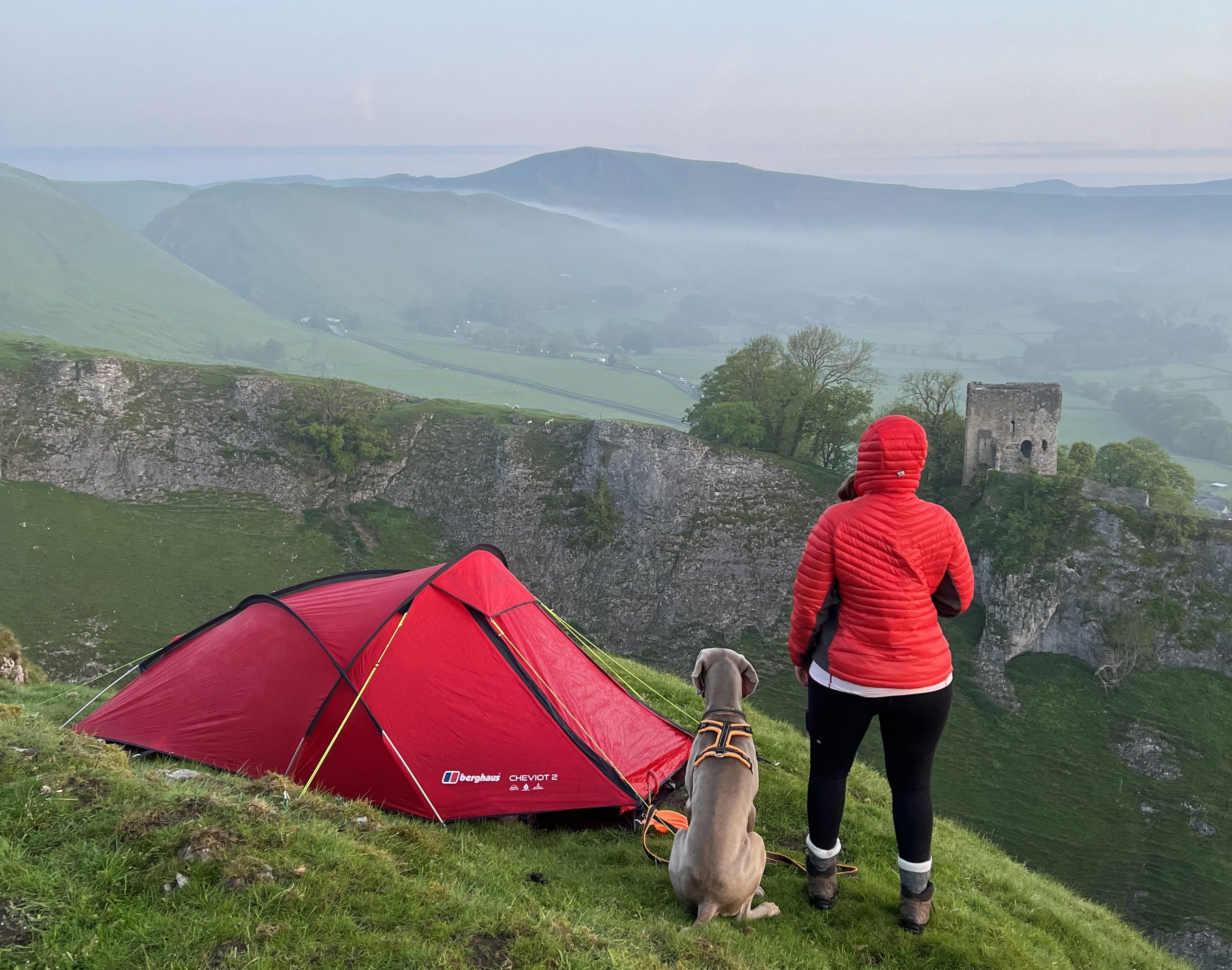
Main image: Backpacking with dogs like Maus who enjoy the outdoors can be a joy | Credit: Francesca Donovan
Dogs can be good company on backpacking adventures – they’re naturally athletic, endlessly enthusiastic, and they won’t natter away while you’re trying to admire the scenery. Depending on the breed and the individual, they can also walk just as far as you can without getting tired. Some will even be able to carry their own provisions.
That said, overnighting in mountainous terrain with a canine companion takes some planning. I’ll never forget a winter night spent shivering on a hard tent floor somewhere in the middle of Dartmoor because a chilly golden retriever had stolen my roll mat. There are also safety considerations associated with taking a dog into more technical terrain.
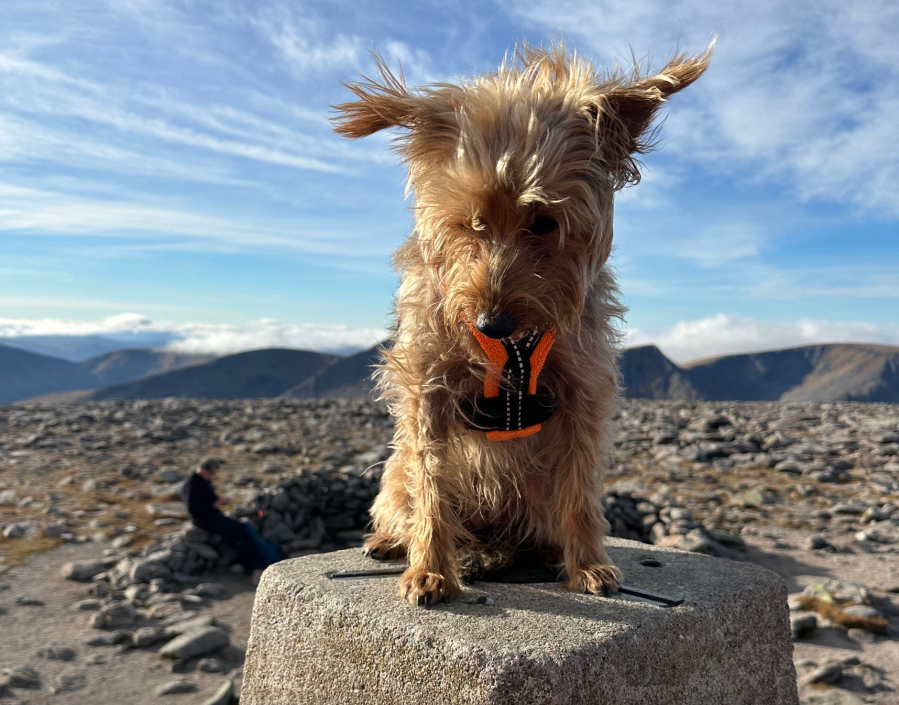
Mountain Rescue teams around the UK receive regular dog-related callouts throughout the year – Scottish Mountain Rescue attended three such incidents in 2022 alone. Last summer, the Keswick team spent five hours carrying a German shepherd with damaged paws down from the fells. “This dog gets regular exercise but walking on grassy fields is no preparation for rough and rocky fells,” they warned.
So how can you reap the benefits of canine companionship without becoming a Mountain Rescue statistic? We asked dog-loving hillwalkers what they’ve learned from backpacking with their furry friends.
Building fitness
You wouldn’t take on a multi-Munro day without a bit of training first – and neither should your dog. Asking them to take on too much too quickly in terms of distance and ascent could result in injury. “Make sure your dog (and you!) are fit enough to climb the hill you set out to attempt,” advises Paul Gorman, owner of cocker spaniel Stanley.
“Many dogs are natural athletes – spaniels, retrievers, collies – but not all. We started Stanley out with smaller hills and shorter walk durations from about a year old before working up to Munros and longer days in the hills. He’s managed a nine-hour walk up Quinag in Assynt and was still going strong at the end (unlike me).”
Training tips
Early training is important for hill-going dogs. They need to walk politely on the lead (dogs should always be kept under close control around livestock and during the bird breeding season) – and good recall can reduce risk in hazardous terrain. “I have always taken my dog MeMe out from a young age and introduced her to different environments, such as being around livestock, cafes and water,” says Emma Shipley of Yorkie Talkies Outdoors.
“I believe this has really helped in how well behaved she is. I obviously keep her leaded around livestock, and she doesn’t even raise her head when walking through a field.” Kirsten Amor, owner of toller retriever Tryfan, also recommends teaching a few specialist commands. “Start training ‘over’, ‘under’ and ‘stay’ early on,” she advises.

“Stiles come in all shapes, sizes, and conditions, and tricky terrain can cut a hike short if your dog gets stuck. If you can start training your dog to go over or under obstacles when they’re young, gradually working up the terrain conditions and complexity as they grow, it helps build their confidence and experience.”
Paws protection
Paw damage is one of the leading causes of injury among dogs in the mountains. The good news is that you can build up pad resilience with practice. “If your dog tends to only walk on pavements then the rocky terrain on mountains might be tough on their paws,” Paul explains.
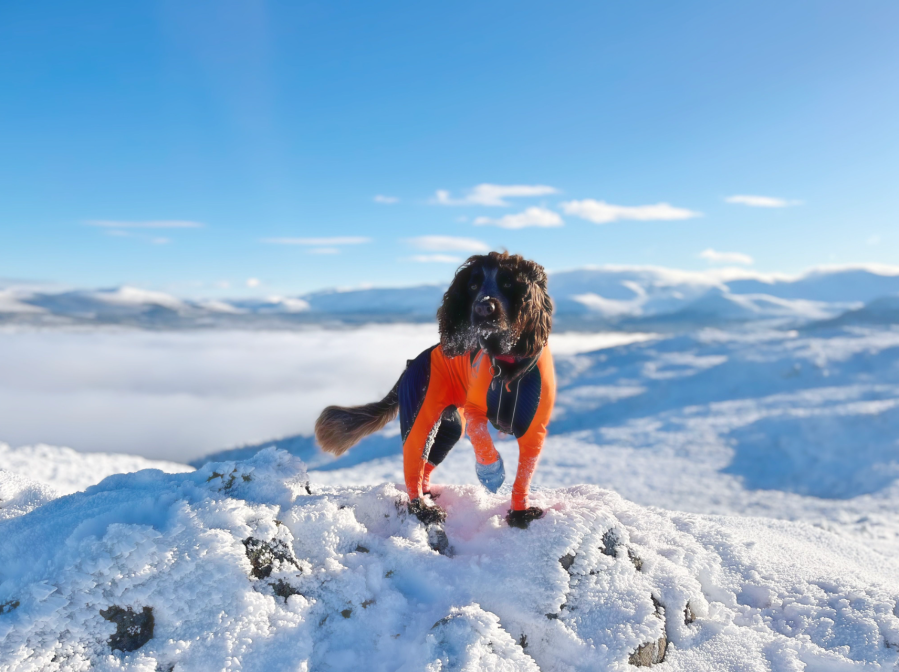
“Try to get them walking with you on some other terrain types – grass, gravel, rock, sand, bracken – to get their paws used to it before you take them up a mountain. If you are intending to take your dog up a mountain with sharp quartzite rock on it, then consider putting a pair of dog bootees on them. Stanley did some hilarious Basil Fawlty-style walking when we first put bootees on him at home, but on the hill they didn’t bother him at all.”
Doggy bags
A downside to taking dogs on backpacking adventure is the extra gear you’ll need to carry. The solution? Share the load. “Our two, Pebbles the boxer and Islay the Labrador, both love accompanying us on camping trips,” says Chrissie Crowther. “In their panniers, they each carry their own sleeping bag, coats to sleep in, a collapsible bowl, a small microfibre towel and a doggy first aid kit.
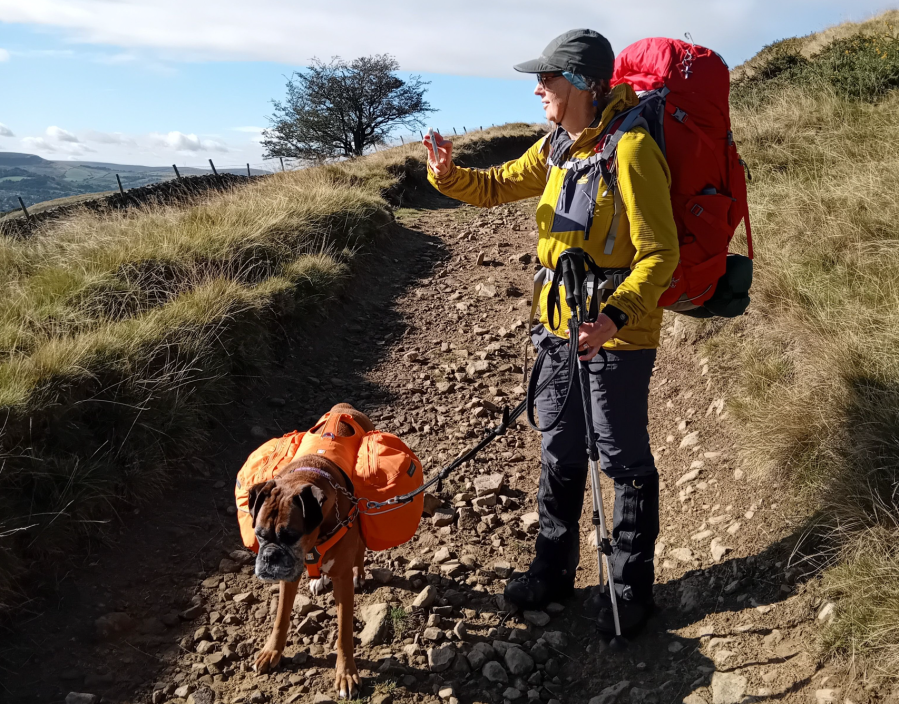
They can also carry a couple of days’ worth of food. “In the past, Pebbles and I even walked the length of the Pennine Bridleway together. Both breeds are traditionally working dogs, and Pebbles in particular seems to rise to the occasion when her panniers come out. As well as all the fun she has, she appears to love feeling useful and a real part if what’s going on.”
Leave no trace
Finally, be prepared to carry out your dog’s waste. “I ensure I pick up dog poo – always leave no trace,” says Emma. Double bag dog poo and store it in a plastic Tupperware container, or make a cache from a PVC pipe and keep it strapped to your backpack ready to receive deposits along the route. It might add a few grams to your pack weight, but it’s worth it to keep the mountains mess-free.
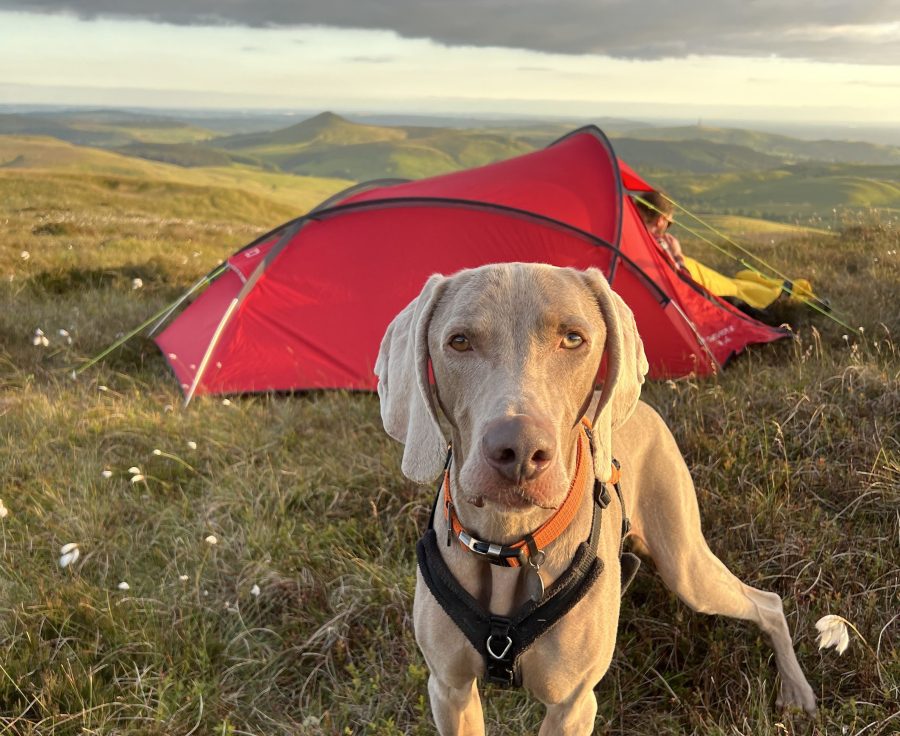
Know their limits
Most importantly, according to our Editor Francesca Donovan, is to know your own dog’s limit. Yes, dogs are incredibly smart and athletic but each is different and has its own proclivities and quirks. They might not always want to adventure in the way you choose and you must respect those boundaries.
Maus, her three-year-old Weimaraner, for example, can happily run or walk a 30-mile day. “But his long legs (and subsequent high centre of gravity) give him the stability of a trifle on difficult terrain,” she says, adding, “Maus is a wonderful companion on long days in the hills and an excellent hot water bottle on camps in all seasons – but he was absolutely not built for scrambling.” Francesca carefully plots her mountain routes with Maus’s abilities in mind.
Despite some encouragement, he’s also not a fan of water so Maus stays high and dry while Francesca swims. “While I’d always imagined going for swims with my dog, no amount of bribery with treats will get Maus to enjoy the water. We, as dog owners, must accept their boundaries. I consider it my job as Maus’ human to adjust to his needs when we share time outdoors together.”
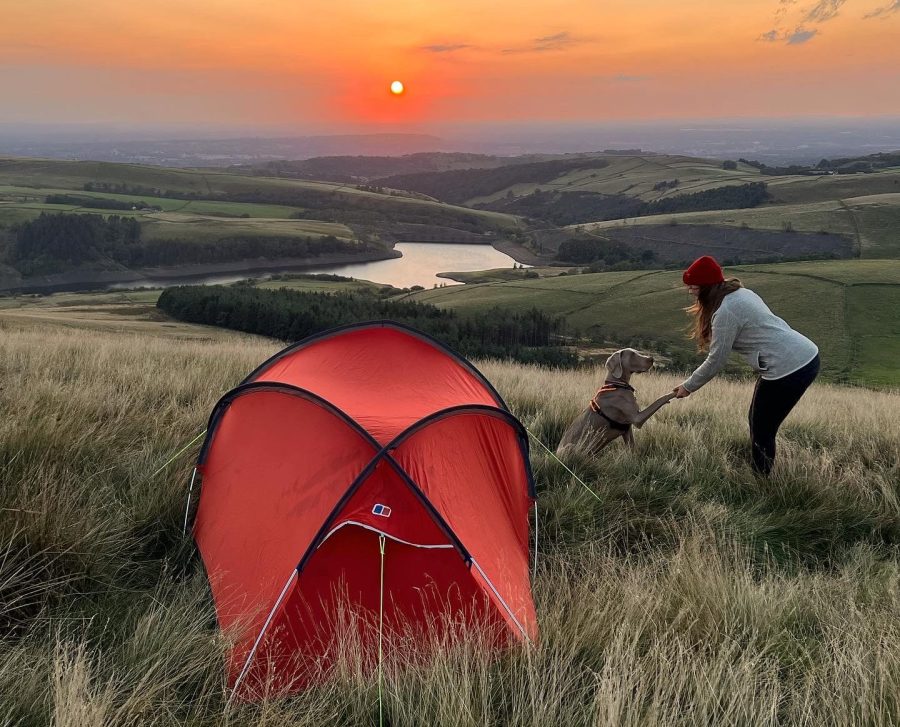
Along with camping essentials such as a coat, sleeping bags, a microfibre towel, dog first aid kit, collapsible water bowl and panniers, there are a few pieces of canine kit you might want to invest in to improve your backpacking experience.
Paul recommends the following:
